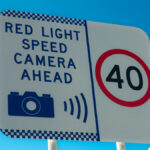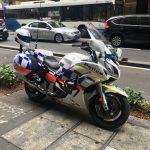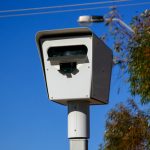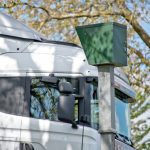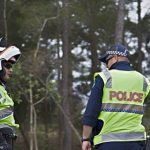Speeding Offences In NSW: What Is the Speed Limit If There Are No Signs?

Driving or riding in excess of the speed limit, or speeding, is one of the most frequently penalised traffic offences in New South Wales.
According to Revenue NSW, the state government received more than $1.5 billion in revenue from fines issued to motorists for speed and red light camera-detected offences between 1 January 2016 and 31 July 2023; $1,541,709,211.00 to be precise.
It’s important that when you drive on NSW roads, that you do not exceed the speed limit for the stretch of road you are driving on. But what if you’re unsure?
The following outlines the general rules regarding speeding in New South Wales, relevant speeding offences and penalties and what you should do if you’re not sure of the speed limit.
Knowing the speed limit
Generally, a driver can know the speed limit on a given road by noting relevant signage in the area.
It’s important that driver’s take note of areas where speed limits may change on the basis of certain time limited zones (for example school zones) or whether there have been adjustments to speed in an area as a result of construction or a major event.
The speed limits in NSW can vary between 10km/h – 110 km/h. For the majority of roads, the speed limit will be ~50km/h in urban / built up areas, ~100 km/h in rural areas or 110 km/h for freeways.
NSW speeding offences
Regulation 20 of the Road Rules 2014 (NSW) simply states:
A driver must not drive at a speed over the speed limit applying to the driver for the length of road where the driver is driving.
In New South Wales, the seriousness of a speeding offence is characterised by the speed you were driving, in comparison to the designated speed limit in the area at the time.
The most serious speeding offences can directly result in a driver licence suspension. These include:
- driving more than 30km/h but not more than 45km/h above the speed limit (3 month suspension), and
- driving more than 45km/h above the speed limit (6 month suspension).
If you are pulled over for speeding by a police officer, your licence can even be confiscated on the spot.
Penalties for NSW speeding offences
The penalty you will face for a speeding offence depends on a number of factors, including:
- The number of kilometres over the speed limit you were travelling,
- The type of vehicle you were driving or riding,
- The type of licence you held,
- Whether double demerits apply, and
- Whether the case is dealt with by a penalty notice or in court.
You can check this page for regularly updated speeding fine amounts, including corresponding demerit points.
The defence of honest and reasonable mistake
In some circumstances, a person fined for a speeding offence may be able to rely on the legal defence of honest and reasonable mistake, on the basis that they were misled about the appropriate speed limit and his or her mistaken belief about the limit that applied was both genuine and reasonable in all of the circumstances.
The defence of ‘honest and reasonable mistake’ is available in ‘strict liability’ cases, which are those for which the prosecution does not need to prove a mental fault element such as negligence, recklessness or intent.
In these cases, the charge must be dismissed if the defendant establishes on the ‘balance of probabilities’ an honest belief on reasonable grounds that he or she was mistaken about a fact that is essential to establishing the offence.
In the context of speeding, this means a driver may be found not guilty if it is established he or she was not aware they were exceeding the speed limit in the area. Circumstances which might give rise to the defence of honest and reasonable mistake include:
- A recent change in speed limit combined with a lack of signage indicating the speed limit had been changed.
- Misleading signage was present which stated the incorrect speed limit.
- Signage stating he speed limit was illegible, and the driver was at a reasonable speed for the area.
It’s important to note that this defence will not be available merely because a driver was inattentive as to the appropriate speed, or missed the signage which indicated the speed limit. You should speak to an experienced traffic lawyer before pursuing the defence of honest and reasonable mistake of fact.
When in doubt, drive at the ‘default speed limit’
If you’re not sure what the speed limit is on a given road, or if there is no signage present, the general advice is to go the ‘default speed limit’
Regulation 25 of the Road Rules states that:
If a speed limit sign does not apply to a length of road and the length of road is not in a speed limited area, school zone or shared zone, the speed limit applying to a driver for the length of road is the default speed limit.
The default speed limit is:
- 50 km/h in built up areas;
- 100 km/h in any other length of road.
A ‘built up area’ in relation to a length of road, means an area in which either of the following is present for a distance of at least 500 metres or, if the length of road is shorter than 500 metres, for the whole road:
- buildings, not over 100 metres apart, on land next to the road;
- street lights not over 100 metres apart.
Challenging a speeding fine
It is important to be aware that the onus rests on the prosecution to prove any speeding allegation beyond a reasonable doubt.
That being so, those who believe that were on the right side of the law can apply for a review or, if this is refused, elect (choose) to take the matter to court and put the prosecution to proof; in other words, make them prove the allegations.
Along with a formal defence of honest and reasonable mistake of fact, additional arguments put forth in court when defending such allegations include:
- The offence did not occur as alleged, or at all,
- Someone else was driving the car when the speeding violation occurred (misidentification),
- The signage regarding the speed limit was confusing, illegible or difficult to see,
- There was a technical error with the speeding camera or device used.
- The penalty notice is invalid, due to an error in or insufficiency of material particulars, and/or
- An emergency justified the violation or the conduct occurred as a result of being threatened with imminent serious harm.
It is important to carefully consider whether to elect to take a penalty notice to court, as it can result in a harsher penalty than that which comes with the penalty notice.
That said, a court also has discretion to deal with the matter by way of a non-conviction order such as a section 10 dismissal in the event you wish to plead guilty or are found guilty and seek leniency.
Getting a non-conviction order means there is no fine or demerit points.
Going to court over a traffic offence?
If you are you going to court to contest a traffic offence, call Sydney Criminal Lawyers anytime on 9261 8881 to arrange a free first conference during which one of our experienced traffic lawyers will assess the case, advise you of your options and the best way forward, and fight for the optimal outcome.

